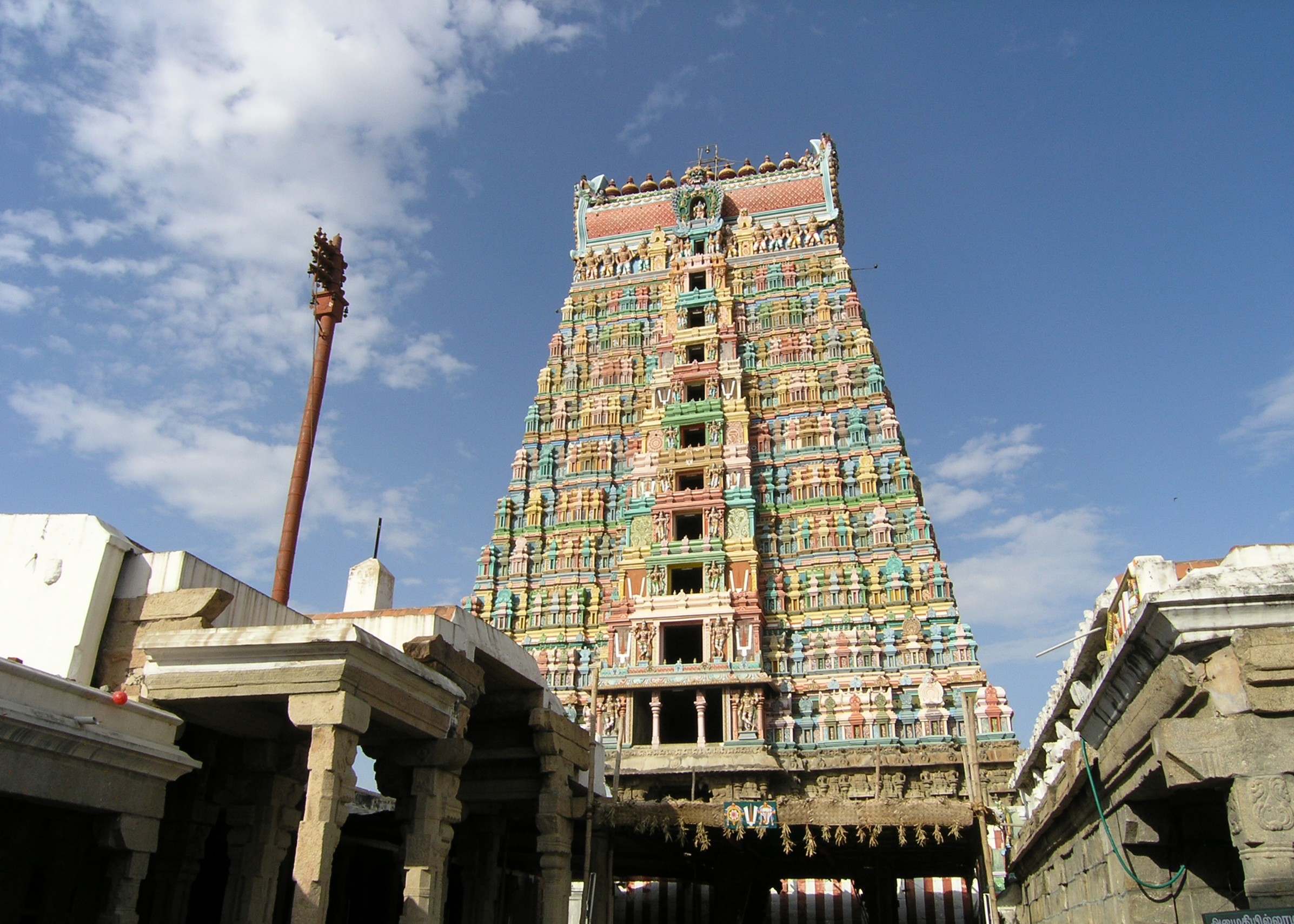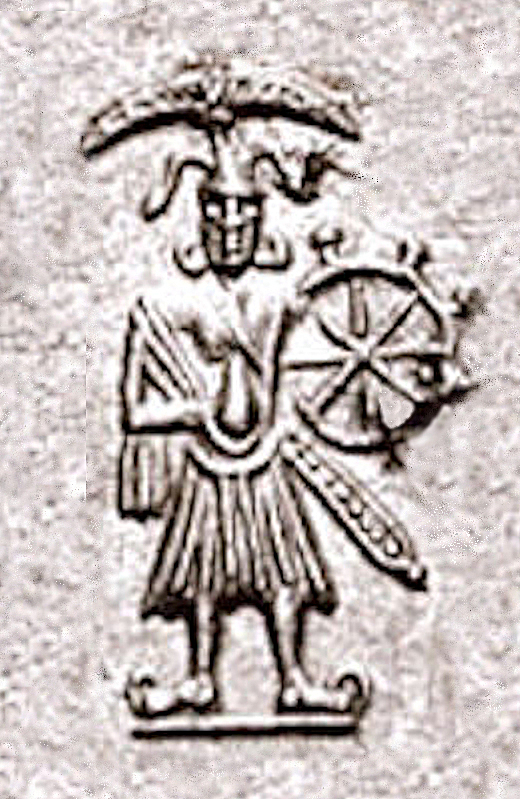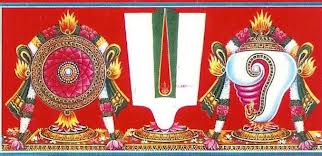|
Alvars
The Alvars () are the Tamil poet-saints of South India who espoused '' bhakti'' (devotion) to the Hindu preserver deity Vishnu, in their songs of longing, ecstasy, and service. They are venerated in Vaishnavism, which regards Vishnu as the Ultimate Reality. Many modern academics place the lifetime of the Alvars between the 5th century and 9th century CE. Traditionally, the Alvars are considered to have lived between and . Orthodoxy posits the number of Alvars as ten, though there are other references that include Andal and Madhurakavi Alvar, making the number 12. Andal is the only female Alvar. Together with the contemporary 63 Shaivite Nayanars, they are among the most important saints from Tamil Nadu. The devotional outpourings of the Alvars, composed during the early medieval period of Tamil history, were the catalysts behind the Bhakti Movement through their hymns of worship to Vishnu and his avatars. They praised the Divya Desams, the 108 divine realms of deities ... [...More Info...] [...Related Items...] OR: [Wikipedia] [Google] [Baidu] |
Nammalvar
Nammalvar was one of the twelve Alvars, Alvar saints of Tamil Nadu, India, who are known for their affiliation to the Vaishnava tradition of Hinduism. The verses of the Alvars are compiled as the Nalayira Divya Prabandham, Naalayira Divya Prabandham, where praises are sung of 108 temples that are classified as divine realms, called the Divya Desam, Divya Desams. Nammalvar is considered to be the fifth in the line of the twelve Alvars. He is highly regarded as a great mystic of the Vaishnava tradition. He is also considered to be the foremost among the twelve Alvars, and his contributions amount to 1352 among the 4000 stanzas in the ''Naalayira Divya Prabandam''. According to traditional scriptures, Nammalvar was born in 3059 BCE in Alwarthirunagiri; historically he flourished in 8th century CE. In Hindu legends, Nammalvar remained speechless from the moment of his birth, sitting under a tamarind tree when he first interacted with Madhurakavi Alvar, who saw a bright light shinin ... [...More Info...] [...Related Items...] OR: [Wikipedia] [Google] [Baidu] |
Nayanars
The Nayanars (or Nayanmars; , and later 'teachers of Shiva') were a group of 63 Tamils, Tamil Hindu saints living during the 6th to 8th centuries CE who were devoted to the Hindu god Shiva. Along with the Alvars, their contemporaries who were devoted to Vishnu, they influenced the Bhakti movement in Middle kingdoms of India#The Deccan plateau and South, early medieval South India. The names of the Nayanars were first compiled by Sundarar. The list was expanded by Nambiyandar Nambi during his compilation of material by the poets for the ''Tirumurai'' collection, and would include Sundarar himself and Sundarar's parents. The Nalvar () are the three foremost Nayanars Appar, Sundarar, Sambandar along with Manikkavasagar, Manikkavacakar. History The list of the Nayanars was initially compiled by Sundarar (Sundararmurthi). In his poem ''Tiruthonda Thogai'' he sings, in eleven verses, the names of the Nayanar saints up to Karaikkal Ammaiyar, and refers to himself as "the servant of ser ... [...More Info...] [...Related Items...] OR: [Wikipedia] [Google] [Baidu] |
Periyalvar
Periyalvar (), also known as Vishnuchittar, was one of the twelve '' Alvar'' saints of South India who are known for their affiliation to the Vaishnava tradition of Hinduism. He was the foster father of Andal. Andal, also called as Kodhai, is the only female Alvar, and is considered to be the incarnation of Bhudevi according to Sri Vaishnavism. The verses of '' Alvars'' are compiled as the '' Naalayira Divya Prabandham'' and the 108 temples revered are classified as '' Divya Desam''. According to some accounts, Periyalvar is considered the first in the line of the twelve Alvars, while other accounts place him as the eighth. His original name was Vishnuchittar. Since he blessed Vishnu as though assuming he were an elder to the deity, he is called Periyalvar. According to Hindu legend, Periyalvar was the foster father of Andal, the only female Alvar. The works of Periyalvar contributed to the philosophical and theological ideas of Vaishnavism, the proponent behind the Bhakti m ... [...More Info...] [...Related Items...] OR: [Wikipedia] [Google] [Baidu] |
Andal
Andal (ISO 15919: Āṇḍāḷ), also known as Godhai, Nachiyar, and Godha Devi, is the only female Alvars, Alvar. (Orthodoxy posits the number of Alvars as ten, though there are other references that include Andal and Madhurakavi Alvar, making the number twelve.) She is an avatar, avatara of the earth goddess Bhumi (goddess), Bhumi, consort of the preserver god Vishnu. As with the other Alvars, she was affiliated with the Sri Vaishnavism, Sri Vaishnava tradition of Hinduism. She was raised by Periyalvar in Srivilliputhur, where she grew up as an ardent devotee of Vishnu as Krishna. Active in the 8th-century CE, Andal is credited with two great Tamil language, Tamil works, ''Tiruppavai'' and ''Nachiyar Tirumoli'', which are still recited by devotees during the winter festival season of Margali. Andal is a prominent figure for women in South India and has inspired several women's groups such as Goda Mandali. History According to literary and religious tradition, Periyalv ... [...More Info...] [...Related Items...] OR: [Wikipedia] [Google] [Baidu] |
Vaishnavism
Vaishnavism () ), also called Vishnuism, is one of the major Hindu denominations, Hindu traditions, that considers Vishnu as the sole Para Brahman, supreme being leading all other Hindu deities, that is, ''Mahavishnu''. It is one of the major Hindu denominations along with Shaivism, Shaktism, and Smartism. Its followers are called Vaishnavites or ''Vaishnava''s (), and it includes sub-sects like Krishnaism and Ramanandi Sampradaya, Ramaism, which consider Krishna and Rama as the supreme beings respectively. According to a 2020 estimate by The World Religion Database (WRD), hosted at Boston University’s Institute on Culture, Religion and World Affairs (CURA), Vaishnavism is the largest Hindu sect, constituting about 399 million Hindus. The ancient emergence of Vaishnavism is unclear, and broadly hypothesized as a History of Hinduism, fusion of various regional non-Vedic religions with worship of Vishnu. It is considered a merger of several popular non-Vedic theistic traditio ... [...More Info...] [...Related Items...] OR: [Wikipedia] [Google] [Baidu] |
Ramayana
The ''Ramayana'' (; ), also known as ''Valmiki Ramayana'', as traditionally attributed to Valmiki, is a smriti text (also described as a Sanskrit literature, Sanskrit Indian epic poetry, epic) from ancient India, one of the two important epics of Hinduism known as the ''Itihasas'', the other being the ''Mahabharata''. The epic narrates the life of Rama, the seventh ''avatar'' of the Hindu deity Vishnu, who is a prince of Ayodhya (Ramayana), Ayodhya in the kingdom of Kosala. The epic follows Exile of Lord Rama, his fourteen-year exile to the forest urged by his father King Dasharatha, on the request of Rama's stepmother Kaikeyi; his travels across the forests in the Indian subcontinent with his wife Sita and brother Lakshmana; the kidnapping of Sita by Ravana, the king of Lanka, that resulted in bloodbath; and Rama's eventual return to Ayodhya (Ramayana), Ayodhya along with Sita to be crowned as a king amidst jubilation and celebration. Scholarly estimates for the earliest stage ... [...More Info...] [...Related Items...] OR: [Wikipedia] [Google] [Baidu] |
Poigai Alvar
Poigai Alvar was one of the twelve '' Alvar'' saints of South India, who are known for their affiliation to Vaishnava tradition of Hinduism. The verses of ''Alvars'' are compiled as ''Nalayira Divya Prabandham'' and the 108 temples revered are classified as '' Divya Desam''. Poigai is one of the three principal ''Alvars'', with the other two being Bhoothath Alvar and Peyalvar, collectively called ''Mutalamalvargal,'' who are regarded to be born out of divinity. Poigai composed hundred verses that are classified as '' Mutal Tiruvantati,'' and his composition is set in the '' antati'' style, in which the ending syllable is the starting one for the next verse. According to traditional account, the first three ''Alvars'' belong to '' Dvapara Yuga'' (before 4200 BCE). As per Hindu legend, Poigai was found in a small pond near the Yadhotakaari temple at Tiruvekkaa. In Tamil, small pond is called ''poigai'', and since he was found in a pond, he got the name Poigai. As per legend, ... [...More Info...] [...Related Items...] OR: [Wikipedia] [Google] [Baidu] |
Kulasekhara Alvar
Kulasekhara ( Tamil: ''குலசேகரர்''; IAST: Kulaśekhara) (''fl.'' 9th century CE), one of the twelve Vaishnavite alvars, was a bhakti theologian and devotional poet from medieval south India. He was the author of " Perumal Tirumoli" in Tamil and " Mukundamala" in Sanskrit. The Perumal Tirumoli, whose second decade is known as "Tetrarum Tiral", is compiled as a part of Nalayira Divya Prabandham. The Trikkulasekharapuram Temple in Kodungallur is associated with Kulasekhara Alvar. Vaishnavite traditions portray Kulasekhara as a ruler from the Chera royal family of the western coast (present-day Kerala). Based on these accounts, contemporary scholars link him to the Chera playwright-king Kulasekhara Varma or Sthanu Ravi Kulasekhara, who reigned from 844/45 to around 870/71 AD and is considered the earliest known Chera Perumal king of Kerala. Sources Scholars generally identify Kulasekhara with Sthanu Ravi Kulasekhara, the earliest known Chera Perumal ki ... [...More Info...] [...Related Items...] OR: [Wikipedia] [Google] [Baidu] |
Thiruppaan Alvar
Tiruppan Alvar () was one of the twelve ''Alvars'' of South India, who were poet-saints known for their affiliation to the Sri Vaishnava tradition of Hinduism. The verses of the ''Alvars'' are compiled as the ''Naalayira Divya Prabandham'' and the 108 temples revered in the text are classified as '' Divya Desams''. Tiruppan Alvar is considered the eleventh in the line of the twelve Alvars. As per local traditions, he was born to a couple from the ''Panar'' community. Tiruppan Alvar is known for his affiliation to Ranganatha of the Srirangam Ranganathaswamy temple and is traditionally believed to have merged with the deity upon his demise. The ten verses of Tiruppan Alvar are called the '' Amalanatipiran'', and his contributions amount to ten verses among the 4000 stanzas in the '' Naalayira Divya Prabandam''. The works of Tiruppan Alvar contributed to the philosophical and theological ideas of Vaishnavism. In South Indian Vishnu temples, Tiruppan Alvar has images and festivals ... [...More Info...] [...Related Items...] OR: [Wikipedia] [Google] [Baidu] |
Madhurakavi Alvar
Madhurakavi Alvar was one of the twelve ''Alvars'' saints of South India, who are known for their affiliation to Vaishnava tradition of Hinduism. The verses of the ''Alvars'' are compiled as the ''Naalayira Divya Prabandham'' and the 108 temples revered are classified as '' Divya Desams''. Madhurakavi is considered to be the sixth in the line of the twelve Alvars. He was the disciple of Nammalvar, considered to be the greatest among the twelve Alvars, his contributions amounting to 11 among the 4000 stanzas in the ''Naalayira Divya Prabandam''. Madhurakavi is believed to have recorded and compiled the works of Nammalvar, the '' Tiruvaymoli'' (1102 verses). The 11 verses of '' Kanninun Cirutampu'' composed by Madhurakavi Alvar may be considered to be the inspiration for the 4000 verses of ''Naalayira Divya Prabandham''. These verses were chanted by Nathamuni 12,000 times to propitiate Nammalvar and re-obtain the lost Naalayira Divya Prabandham from Nammalvar. As per Hindu legen ... [...More Info...] [...Related Items...] OR: [Wikipedia] [Google] [Baidu] |
Sri Vaishnavism
Sri Vaishnavism () is a denomination within the Vaishnavism tradition of Hinduism, predominantly practiced in South India. The name refers to goddess Lakshmi (also known as Sri), as well as a prefix that means "sacred, revered", and the god Vishnu, who are together revered in this tradition. The tradition traces its roots to the ancient Vedas and Pancharatra texts, popularised by the Alvars and their canon, the Naalayira Divya Prabandham. The founding of Sri Vaishnavism is traditionally attributed to Nathamuni of the 10th century CE; its central philosopher has been Ramanuja of the 11th century, who developed the ''Vishishtadvaita'' ("qualified non-dualism") Vedanta sub-school of Hindu philosophy. The tradition split into two denominations around the 16th century. The Vadakalai sect vested the Vedas with the greatest authority and follow the doctrine of Vedanta Desika, whereas the Tenkalai sect vested the Naalayira Divya Prabandham with the greatest authority and follow the pri ... [...More Info...] [...Related Items...] OR: [Wikipedia] [Google] [Baidu] |
Hypercorrection
In sociolinguistics, hypercorrection is the nonstandard use of language that results from the overapplication of a perceived rule of language-usage prescription. A speaker or writer who produces a hypercorrection generally believes through a misunderstanding of such rules that the form or phrase they use is more "correct", standard, or otherwise preferable, often combined with a desire to appear formal or educated. Linguistic hypercorrection occurs when a real or imagined grammatical rule is applied in an inappropriate context, so that an attempt to be "correct" leads to an incorrect result. It does not occur when a speaker follows "a natural speech instinct", according to Otto Jespersen and Robert J. Menner. Hypercorrection can be found among speakers of less prestigious language varieties who attempt to produce forms associated with high-prestige varieties, even in situations where speakers of those varieties would not. Some commentators call such production ''hyperurba ... [...More Info...] [...Related Items...] OR: [Wikipedia] [Google] [Baidu] |








